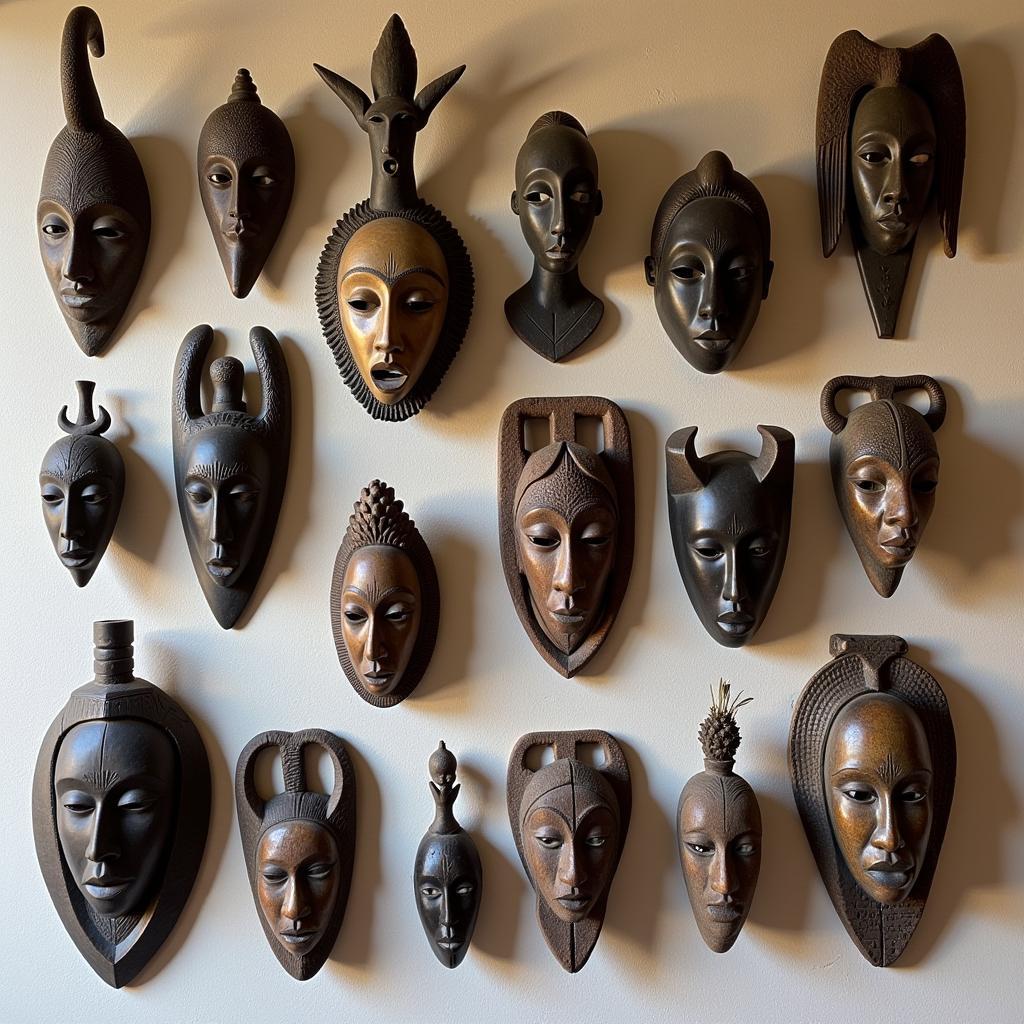Exploring the World of African Ethnic Tribal Art
African Ethnic Tribal Art represents a vast and diverse spectrum of creative expressions that embody the history, beliefs, and traditions of various African tribes. From intricate masks and sculptures to vibrant textiles and beadwork, each piece tells a story, reflects a cultural value, or serves a specific ritualistic purpose.
The Significance of African Tribal Art
African tribal art is far more than just aesthetically pleasing objects. They are deeply intertwined with the social, religious, and political fabric of the communities that create them. These art forms serve as:
- Visual Representations of Beliefs: Many pieces depict deities, spirits, or ancestors, reflecting the spiritual beliefs and cosmologies of the tribe.
- Tools for Rituals and Ceremonies: Masks, sculptures, and other art forms play integral roles in initiation rites, funerals, harvest festivals, and other important ceremonies.
- Symbols of Power and Prestige: Certain art objects, such as elaborate headdresses or staffs, often denote leadership roles, social status, or lineage within a tribe.
- A Means of Communication: Before writing systems were widespread, art served as a visual language to convey stories, histories, and moral values.
Different Forms of African Ethnic Tribal Art
The diversity of African tribal art is immense, with each region and tribe boasting unique styles, materials, and techniques. Some of the prominent forms include:
Masks
 A Collection of African Masks on Display
A Collection of African Masks on Display
Masks are among the most recognizable forms of African tribal art. Used in ceremonies, dances, and rituals, they often represent spirits, ancestors, or mythical beings. The materials used vary widely, from wood and bronze to feathers, beads, and animal skins.
Sculptures
African sculptures encompass a wide range of forms, including figures, statues, and masks. They are often carved from wood, but materials like bronze, ivory, and terracotta are also common. These sculptures often represent ancestors, deities, or important figures in tribal history.
Textiles
African textiles are renowned for their vibrant colors, intricate patterns, and diverse weaving techniques. From the kente cloth of Ghana to the mud cloth of Mali, each region has its own distinctive textile traditions. These textiles often feature symbolic motifs and are used for clothing, ceremonial garments, and wall hangings.
Beadwork
Beads hold cultural significance in many African tribes and are used extensively in jewelry, clothing adornments, and ceremonial objects. The colors and patterns often carry specific meanings and can signify social status, age, or marital status.
Preserving and Appreciating African Tribal Art
African ethnic tribal art is facing challenges from globalization, the passage of time, and the illicit art market. It’s crucial to support efforts to:
- Preserve Cultural Heritage: Museums and cultural institutions play a vital role in preserving and showcasing these art forms for future generations.
- Promote Ethical Collection Practices: Encourage the ethical acquisition of African art, ensuring that pieces are obtained through legitimate channels and that communities benefit from their sale.
- Educate and Raise Awareness: Promote understanding and appreciation for the richness and diversity of African tribal art through exhibitions, educational programs, and publications.
Conclusion
African ethnic tribal art offers a captivating window into the diverse cultures and rich histories of the continent. By understanding the meanings, techniques, and cultural contexts behind these art forms, we can gain a deeper appreciation for the creativity, beliefs, and traditions of African people. Supporting the preservation and ethical appreciation of these art forms ensures that future generations can continue to learn from and be inspired by the artistic legacy of Africa.

